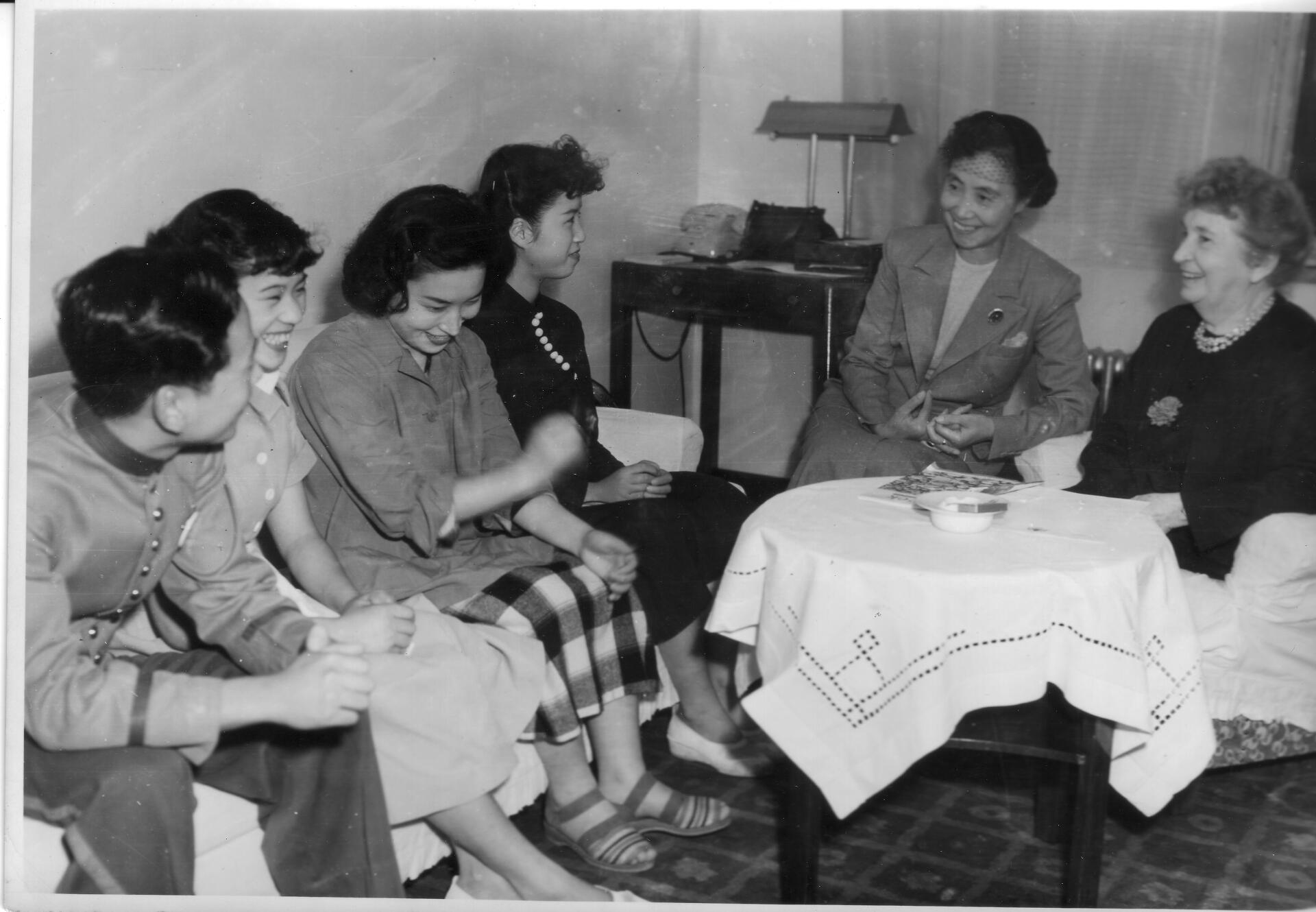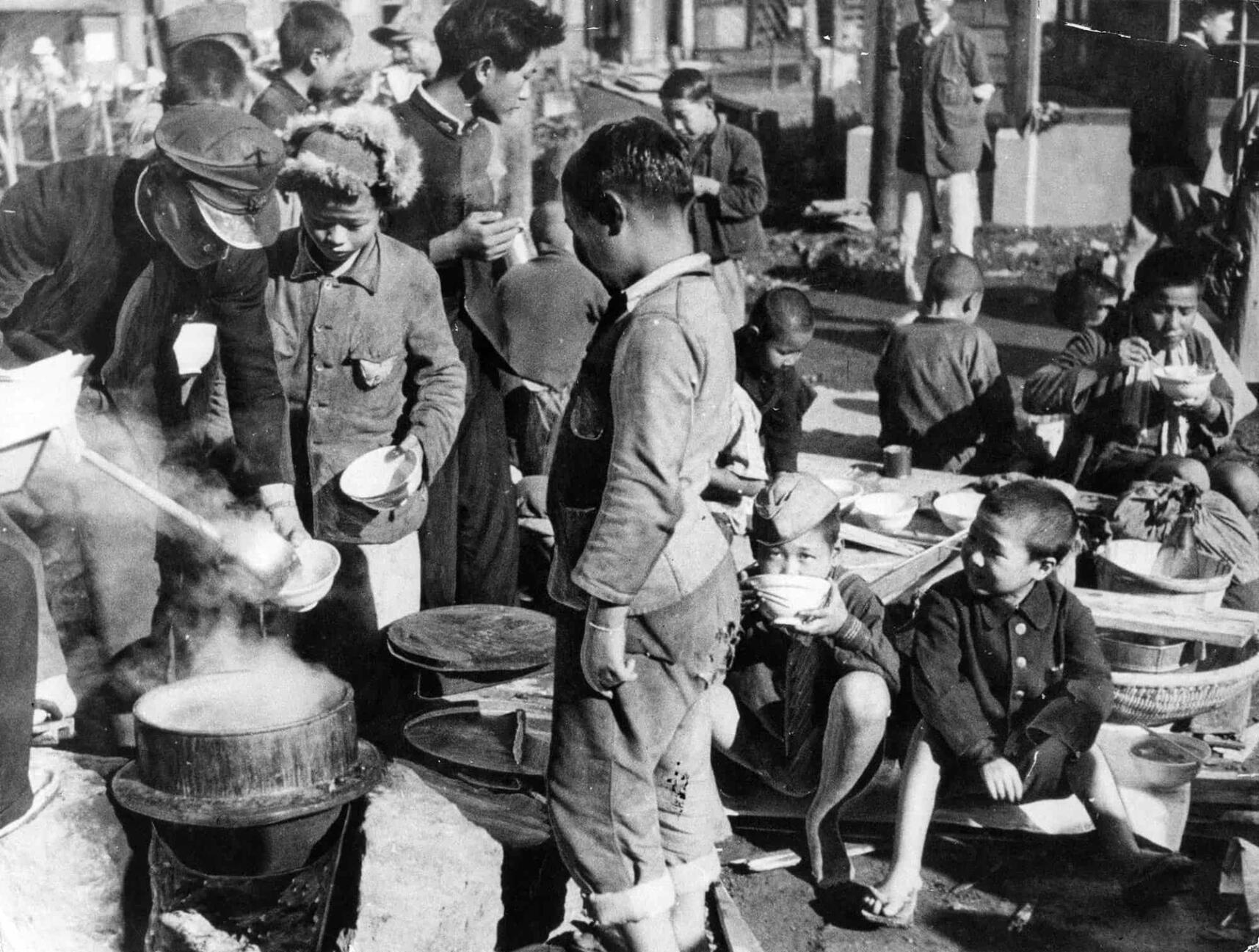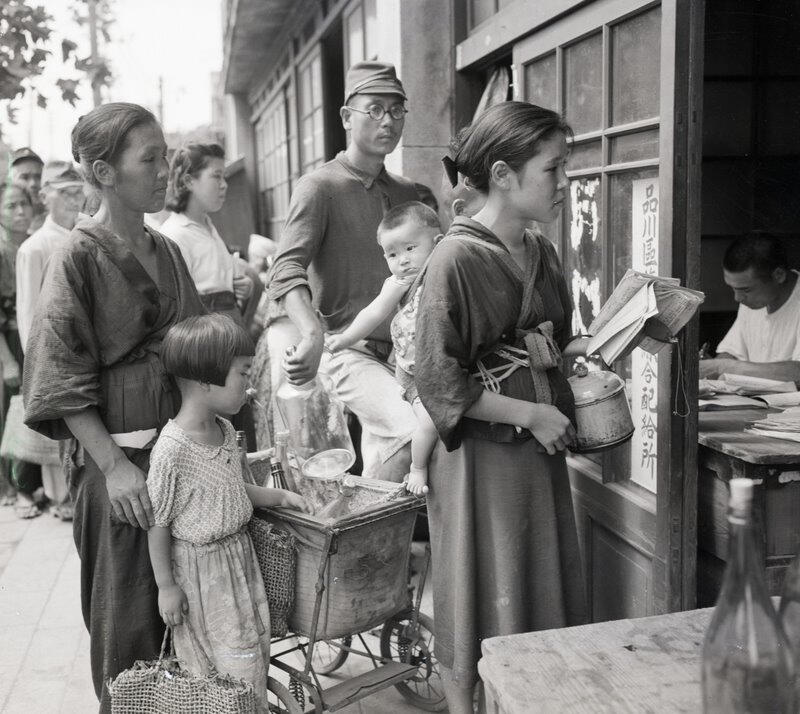A Brief Background
on the
Birth Control Movement
Kato Shizue and Margaret Sanger at the Fifth International Conference on Planned Parenthood, held October 24-29, 1955 in Tokyo, Japan. Photo from Margaret Sanger Papers Project's Website.
The wave of Westernization during the Taisho period (1912-1926) brought about new ideologies and socio-political movements from the West, including the birth control movement. However, this idea was not received positively, and birth control was considered to be a social and political taboo, due to its affiliation with socialism and women’s liberation.¹ It was because during this period before and during the war, women were encouraged to “give birth and multiply” to increase the Japanese population as the country was in desperate need of more soldiers.²
Japan faced a drastic shift from this view after the end of World War II. With their defeat, the country’s imperialist aspirations to become the ‘Greater Japanese Empire’ were shattered.³ Postwar Japan had a rapid increase in population as repatriation of millions of soldiers and civilians from overseas colonies, and a baby boom led to a moderate death rate of 14.6 per 1,000, resulting in population growth of 31 per 1,000 population.⁴ In fact, from 1945 to 1950, the country’s population grew from 72 million to 83.3 million.⁵ Attributing to this high population growth, a variety of seemingly insurmountable issues emerged, including a poor economy, lack of food supply, and lack of housing.⁶
Post-war Japan. Photos from Constitutional Change in Japan "Japan's Postwar Constitution"
For the sake of national survival, Japan became desperate to control its population. Hence, the post-war government relied on birth control to slow the population growth. ⁷ It was even said that it was only through making birth control a mass movement that Japan would be able to solve its population problem and solve the other difficulties it brought along. ⁸
Due to the horrid living conditions people faced, the early postwar years consisted of drastic increases in the number of illegal abortions and birth rates.⁹ Concerned about the soaring abortion rate, the government began promoting contraceptive methods. Furthermore, the small family ideal was welcomed by the majority. Consequently, birth control became an official policy, as well as an actual practice to limit and regulate births in post-1945 Japan.¹⁰
1 Tipton, The birth‐control movement in pre‐1945 Japan, 337-355.
2 Tipton, The birth‐control movement in pre‐1945 Japan, 337-355.
3 Homei, The Science of Population and Birth Control in Post-War Japan.
4 Homei, The Science of Population and Birth Control in Post-War Japan.
5 Norgren, Abortion before Birth Control, 67.
6 Ishimoto, Birth Control in Japan, 297.
7 Homei, The Science of Population and Birth Control in Post-War Japan.
8 Ishimoto, Birth Control in Japan, 297.
9 Tipton, The birth‐control movement in pre‐1945 Japan, 337-355.
10 Tipton, The birth‐control movement in pre‐1945 Japan, 337-355.
Video background: Constitutional Change in Japan, A Hard Recovery, "Japan's Postwar Constitution".
Taking Control: The Conquest for the Legalization of Birth Control in Japan
A Digital Exhibit by Mallari and Shiojiri


